Search results for 'de la'
-
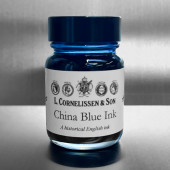
Cornelissen Historical Inks, China Blue
£6.50Call to Order
Formulated from the same dye that was used to colour blue and white china, this ink is a deep, rich blue. Used at full opacity, it is a blue-black, and dilutes down to wonderful cold blue washes. As it is dye-based, it is not fully lightfast. Learn More -
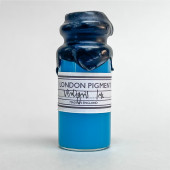
London Pigment, Verdigris Ink, 20 ml
£12.50Call to Order
Ink made from pure copper metal leaf that has reacted with distilled vinegar. ****Please note, these inks are artisan made in small batches. Please email info@cornelissen.com for availability**** Learn More -
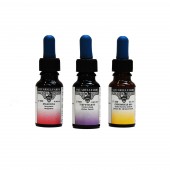
Rohrer & Klingner Liquid Watercolour Inks
Starting at: £9.30
Call to Order
Liquid Watercolour (series 27). 18 shades of highly concentrated organic pigment in a light acrylic base. Low dosage of the binder allows dried colour to be dissolved up to 24 hours after application. Colours retain their strength when diluted with water, Drying Retarder or Gloss Intensifier mediums. Undiluted applications may bronze when dry. Learn More -
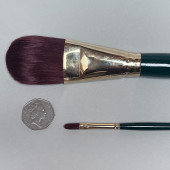
Roberson Interlon Series 64 Filbert
Starting at: £5.60
Call to Order
Made with new improved brown interlocking tapered filaments, these brushes have an excellent shape retention and firm texture. Good spring. Gold colour ferrule with bottle green handle. *AWAITING ARRIVAL OF NEW STOCK* Learn More -
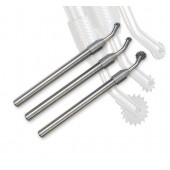
Pounce Wheels
Starting at: £13.70
Call to Order
Transfers designs to flat or uneven surfaces. TPI - Teeth per inch. Learn More -
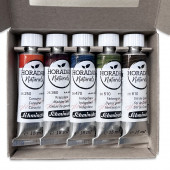
Schmincke Horadam Naturals Set Resins
£49.00Call to Order
Schmincke Horadam Naturals Set Plant Resins/Extracts 5 x 15 ml Cucuma Madder Lake Indigofera Dyer's Green Stil de Grain Learn More -
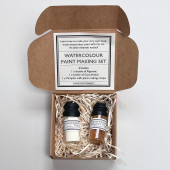
London Pigment, Watercolour Paint Making Set
£35.00Call to Order
This watercolour paint making set includes a 30ml glass vial of gum Arabic crystals and another of Hampstead Orange, a pigment rich in iron oxide. A pamphlet detailing a a watercolour recipe and an introduction to London pigment is also included. The perfect gift for artists getting into making their own art materials or those interested in handmade British earth colours. The pigment itself has a fine to medium grain size and has been washed, levigated and ground to create a stable high quality artist’s pigment.
Learn More -
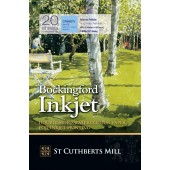
Bockingford Inkjet Paper
Starting at: £26.35
Call to Order
190GSM, A4 / A3+, 20 Sheets, CP (NOT), pH Neutral, Acid Free, Archival, White. Learn More -

London Pigment, English Green Earth
£30.00Call to Order
Prepared by hand and bottled in a rare, hand-blown laboratory glass Weighing Bottle. 20 ml. Gently twist the hand-formed, flame-like stopper and pull carefully to open. ****Please note, these pigments are artisan made in small batches. Please email info@cornelissen.com for availability**** Learn More
-
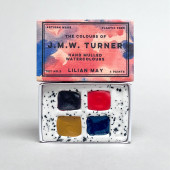
Lilian May, J.M.W. Turner Watercolours, Matchbox Set, 4 Wells
£20.00Call to Order
Matchbox Set Dimensions 5.5 cm x 3.5 cm Prussian Blue PB27 Yellow Ochre PY43 Vermilion PR4, PY1, W21 Genuine Madder NR9 Learn More -
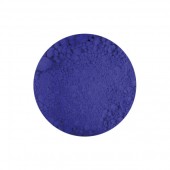
Cobalt Blue Pigment
Starting at: £6.50
Call to Order
PB28
Cobalt Blue is an artificial mineral pigment, produced by the calcination of cobalt oxide and aluminium oxide. It has been widely used since the early 1800s, following its discovery by the French chemist Thenard at the beginning of the century. The name Cobalt has its roots in the German word Kobold, meaning imp or evil spirit. German miners specifically used this name in the late-Middle Ages, as the presence of Cobalt ore in the mines made the extraction of silver very difficult. They were possibly aware of the toxic properties of the mineral frustrating their efforts.
Cobalt remains a very popular colour today, and is present in most ranges of paints, being a semi-transparent pigment that is stable in all media. As a watercolour, all cobalt pigments tend to granulate. As an oil paint, it requires less oil content than most other pigments, and dries quite quickly. Like Cerulean Blue, some artists may choose to bind it with poppy oil, to avoid any possible colour changes brought about by the yellowish cast of linseed oil and the pigment's weak tinting strength.
Limeproof
Toxicity: C
Learn More -
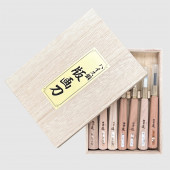
Japanese Woodcut Tool Set 7
£205.00Call to Order
Japanese Woodcut Tools Set of 7, in a wooden box. Cherrywood handles with hard, durable, High Speed Steel chisels. Sizes: Hangito (Knife) 6 mm Komasuki (U) 3 mm, 6 mm Aisuki (Flat) 1.5 mm, 3 mm, 6 mm V 4.5 mm Learn More -
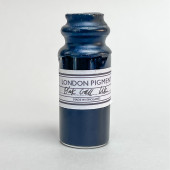
London Pigment, Oak Gall Ink, 20 ml
£12.50Call to Order
English Oak Gall Ink ****Please note, these inks are artisan made in small batches. Please email info@cornelissen.com for availability**** Learn More -
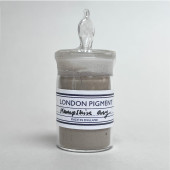
London Pigment, Hampshire Grey
£30.00Call to Order
Pigment collected from erosion. ****Please note, these pigments are artisan made in small batches. Please email info@cornelissen.com for availability**** Learn More -
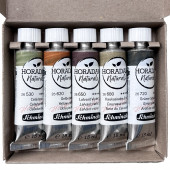
Schmincke Horadam Naturals Set Earths
£49.00Call to Order
Schmincke Horadam Naturals Set Earth Pigments 5 x 15 ml Celadonite Yellow Ochre Lalvarit Violet Caucasus Earth Green Slate Learn More -
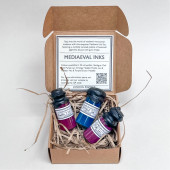
London Pigment, Mediaeval Inks Set, 1
£35.00Call to Order
Verdigris Ink Purple Madder and Lac Ink Purple Lac Ink Learn More -
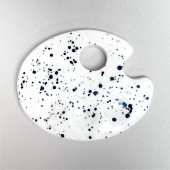
Lilian May, Mini Ceramic Palette
£12.00Call to Order
Ceramic palette, 4 wells, 8 cm x 8 cm Handmade in Somerset, UK. Learn More -

STAEDTLER Double-Hole Tub Sharpener
£4.70Call to Order
Double-hole tub sharpener for standard-sized coloured pencils up to 8.2 mm Ø, with a sharpening angle of 30° and thick graphite and coloured pencils up to 10.2 mm Ø, with a sharpening angle of 30°.
Learn More -
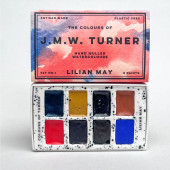
Lilian May, J.M.W. Turner Watercolour Box Set, 8 Wells
£40.00Call to Order
Box Set Dimensions 9 cm x 5.5 cm Utramarine PB29 Burnt Umber PBR6 Genuine Madder NR9 Vermilion PR4, PY1, W21 Mars Orange PY42, PR10 Indigo NB1 Yellow Ochre PY43 Prussian Blue PB27. Learn More -
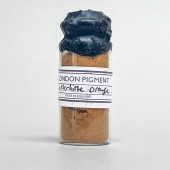
London Pigment, Rotherhithe Orange Pigment
£20.00Call to Order
This unique colour is an intense orange oxide that is made from the decay of Victorian pipes mixing with the chalk bed of the infilled docks at Rotherhithe, in south east London. Rotherhithe has a long history as a port, with many shipyards from Elizabethan times until the early 20th century and with working docks until the 1970s, when they began to be infilled due to a decline in imports to Central London. With a fine particle size and transparent quality this pigment would be great for glazing techniques.
Follow @londonpigment on Instagram for an insight into the stories behind the colours and how she makes them.
****Please note, these pigments are artisan made in small batches. Please email info@cornelissen.com for availability**** Learn More




